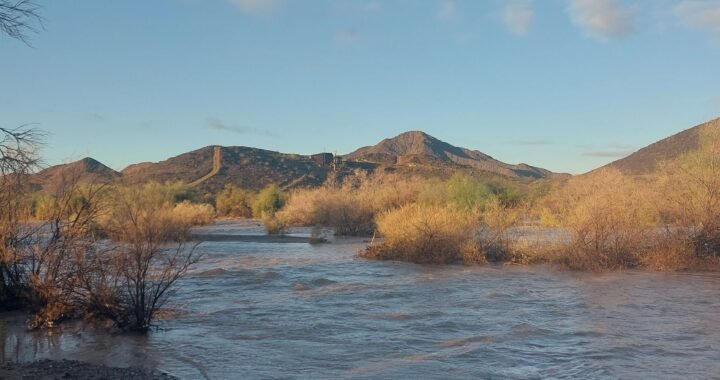When you think of a desert, you probably think of dry, sandy areas with cacti and little rain. You may think of rain as something that doesn’t happen in deserts, let alone cause rivers of floods washing through the lands. I wouldn’t have believed it without seeing it myself, but rain is more frequent than I imagined it would be, and fast-moving rivers are a relatively common occurrence in some areas, especially in the Sonoran desert.
A desert is a place that receives less than 10″ of rain per year, and frequently loses more moisture than it receives. Surprisingly, only 20% of the world’s deserts are covered by sand, and 1/6th of the world’s population lives in a desert.
The Sonoran desert is one of the more diverse deserts, with areas of all types including snow! This desert is one of four major deserts in North America, and includes parts of Arizona, California, and Mexico. It contains over 2000 different species of plants and has relatively rainy and humid summers. These plants survive with adaptations to allow little to no water for extended periods of time – some can go years without water. The creatures of deserts tend to be nocturnal, live underground, and get their water needs from their diets rather than drinking.

Though the average amount of rain is not a large amount (Quartzsite, Arizona averages 4.4″ per year), because of the dry terrain, water doesn’t absorb into the earth like it does in other areas. The rain washes down from higher elevations, like mountains, down to the lower areas through washes, which are usually shallow channels in the land that allow water to flow through. Flash flooding can even occur during a clear day due to rainfall elsewhere.

An amazing sight to see, and an extraordinary reminder to stay clear of washes as they may be dry one day, but you never know when rainfall elsewhere can cause washes to flood. The water can run very rapidly, with power enough to bring all sorts of debris with them, from rocks and twigs to large branches and tree trunks. You also can’t always gauge the depth of these washes – this one shown below is about 5 feet deep! It is important to stay out of them and to never drive through a road or wash that is flooded over. Even the shallow seeming streams can pack a surprising amount of power.

References
- https://www.desertmuseum.org/desert/sonora.php
- https://education.nationalgeographic.org/resource/deserts-explained/
- https://www.bestplaces.net/climate/city/arizona/quartzsite
- https://www.desertmuseum.org/books/nhsd_grasses.php#:~:text=Grasses%20are%20the%20second%20most,endemic%20to%20the%20Sonoran%20Desert.




Leave a Reply